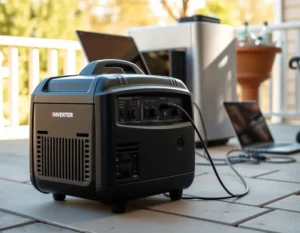
En el mundo moderno, donde la electricidad es fundamental para nuestras actividades diarias, las interrupciones eléctricas son un gran inconveniente, pueden afectar nuestra productividad y
In a world where nature can unleash its fury at any moment, it is essential to be prepared and understand the natural phenomena that can affect our lives. Two of the most powerful and often misunderstood weather events are tornadoes and hurricanes.
Throughout this article, we will unravel the mysteries behind tornadoes and hurricanes, explain their fundamental differences, and provide you with tips to stay safe in case you find yourself facing one of these natural events.
Let's start exploring the magnificence and power of nature!
The formation and characteristics of tornadoes and hurricanes are key areas for understanding the differences between these two atmospheric phenomena.
Tornadoes originate in the context of severe storms, particularly those known as "supercells." These storms are characterized by having a mesocyclone, a region of upward rotation of air, inside them. The formation of a tornado is a complex process that involves several stages:
Atmospheric Instability: For a tornado to form, an unstable atmosphere is required, where warm, moist air at the surface rises and meets cold air at higher levels.
Horizontal Rotation: Inside the supercell, an area of horizontal rotation known as a mesocyclone forms. This rotation is an essential component in tornado formation.
Vertical Tilt: When the mesocyclone tilts vertically, it can descend toward the Earth's surface. This process is known as “vertical tilt” and is critical for a tornado to touch down.
Tornado in Formation: Once the mesocyclone reaches the surface, it can begin to narrow and stretch, forming the characteristic rotating column of air of a tornado. The rotation may be invisible to the naked eye until the tornado kicks up dust or debris from the ground.
Tornadoes vary in size, but some may be only a few meters in diameter, while others may reach hundreds of meters. Its duration can also vary from seconds to more than an hour.
Hurricane Formation
During the Hurricane season, These develop over warm waters, generally in tropical and subtropical regions. Its formation is a gradual process that involves several key steps:
Meteorological Disturbance: It all starts with a weather disturbance, which can be a buildup of storms and rain in a specific region. These disturbances often originate in areas of low atmospheric pressure.
Latent heat: The key to hurricane formation is the release of latent heat. This occurs when ocean surface water evaporates due to high temperatures. The energy released during evaporation fuels the developing system.
Organization: As the weather disturbance intensifies and latent heat builds up, the system begins to organize. An area of low pressure forms in the center, which is known as the "eye" of the hurricane.
Around the eye, bands of clouds and strong winds develop, rotating counterclockwise in the northern hemisphere and clockwise in the southern hemisphere.
Categorization: Hurricanes are classified into different groups depending on the hurricane category of Saffir-Simpson, which ranges from 1 to 5, with category 5 being the most powerful. The categorization is based on the maximum sustained wind speed of the hurricane.
Tornadoes are relatively small-scale weather phenomena compared to hurricanes. A typical tornado has a diameter that varies from a few meters to about a kilometer. This smaller scale means that tornadoes can be extremely localized and destructive in a small area, but their impact quickly diminishes as they move away from the point of formation.
On the other hand, hurricanes are vast storm systems spanning hundreds of kilometers in diameter. The dimensions of a hurricane can be so large that its influence can be felt over a much larger region.
Hurricane-force winds spread from the center of the hurricane outward in all directions, resulting in a more widespread and long-lasting influence on the affected area.
If you want to learn more about tornadoes and hurricanes, we invite you to explore our Blog, where you will find an abundant source of information that we are sure you will find interesting.
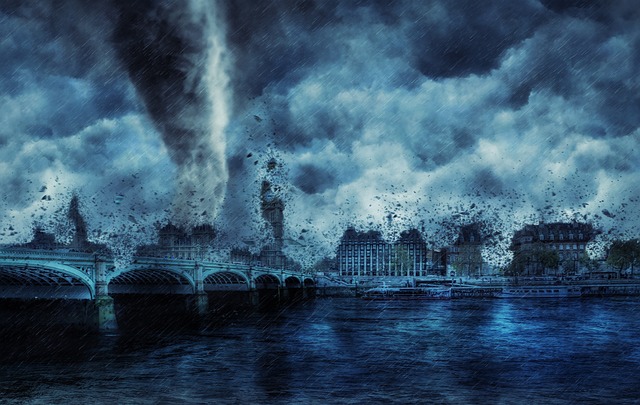
Wind speeds are another distinguishing factor between tornadoes and hurricanes.
Tornadoes are known for their extremely strong and destructive winds. Wind speeds in a tornado can vary considerably, but the most powerful tornadoes can reach speeds exceeding 300 kilometers per hour (186 miles per hour) or even more.
These wind speeds are capable of uprooting trees, destroying buildings, and throwing objects great distances, making tornadoes one of the most dangerous weather phenomena in terms of wind.
In contrast, hurricanes also have powerful winds, but their average maximum speed is typically in the range of 119 to 249 kilometers per hour (74 to 155 miles per hour) on the Saffir-Simpson hurricane scale. Category 3 or higher hurricanes, however, can have wind speeds exceeding 178 kilometers per hour (111 miles per hour), making them equally dangerous.
Tornadoes and hurricanes also differ in terms of forecasting and tracking:
Tornadoes are very local and rapidly developing weather phenomena. Meteorologists use specialized radar to detect tornado formation and issue tornado warnings when their presence is suspected. These warnings are usually short-term and seek to alert people in specific areas.
On the other hand, hurricanes are phenomena that form over the ocean and move over long distances. Meteorologists can track their development for days or even weeks before they make landfall.
Hurricane warnings are issued early enough to allow communities to prepare and evacuate if necessary. Additionally, tracking forecasts are made to predict the path and intensity of the hurricane as it moves.
Preparedness and safety are critical when facing the threat of tornadoes and hurricanes. These weather events can be dangerous and potentially devastating, but with proper planning, you can protect your family, your home, and your business.
Here are some essential guidelines to stay safe during these events:
Identify a Safe Haven: The first thing you should do is identify a safe haven in your home. This can be a basement if you have one, or an interior room with no windows.
Emergency kit: Keep an emergency kit with essential supplies, such as flashlights, batteries, non-perishable food, and water.
Stay informed: Pay attention to weather alerts and, if possible, have an emergency radio on hand to receive real-time updates.
Outdoor Shelter: If you are outdoors or in a vehicle and do not have access to safe shelter, find a low, sheltered location, such as a ditch.
Evacuation route: Plan an evacuation route and follow evacuation orders from local authorities. Don't underestimate the strength and reach of a hurricane; It is essential to evacuate if you are told to do so.
Strengthen Your Home: Before a hurricane hits, reinforce your home's windows and doors and secure any objects that could become a projectile due to high winds.
Supply Supply: Supply food, water and medicine for several days. During and after a hurricane, disruptions to food and water supplies are common, so it is important to be prepared.
Stay informed: Stay connected to trusted sources of information, such as the weather service and local authorities. Follow updates on the hurricane's path and be prepared to take quick action based on the latest information.
In JRH Power Generator, we understand the importance of emergency preparedness and safety during extreme weather events. One of the most effective measures to maintain safety in power outage situations during tornadoes or hurricanes is to have a emergency generator reliable.
Don't wait until a storm approaches to take action. Proper preparation is the key to successfully meeting the challenges presented by tornadoes and hurricanes, and in JRH Power Generator, we are committed to being your partner in energy security.

En el mundo moderno, donde la electricidad es fundamental para nuestras actividades diarias, las interrupciones eléctricas son un gran inconveniente, pueden afectar nuestra productividad y
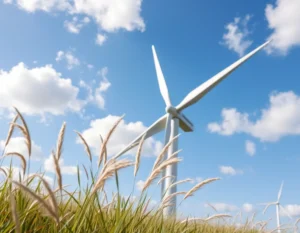
Las turbinas eólicas se han convertido en el emblema de la energía renovable, ofreciendo una solución sostenible y limpia frente a los combustibles fósiles. Sin
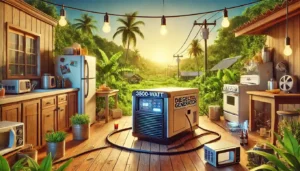
Cuando se trata de mantener la energía en situaciones de emergencia, durante viajes de campamento o en eventos al aire libre, un generador de 3500

En tiempos de cortes de energía o desastres naturales, saber cómo usar un generador para alimentar una casa puede marcar la diferencia entre estar preparado
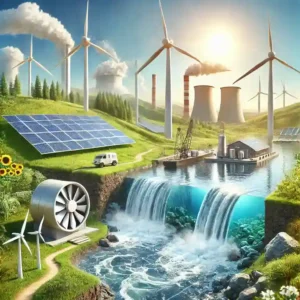
La búsqueda de energías alternativas se ha convertido en un pilar fundamental en la discusión sobre sostenibilidad y el futuro energético del planeta. Pero, ¿cuáles

En un mundo donde la demanda de energía eléctrica sigue en aumento, las interrupciones de servicio y el costo creciente de la electricidad han impulsado